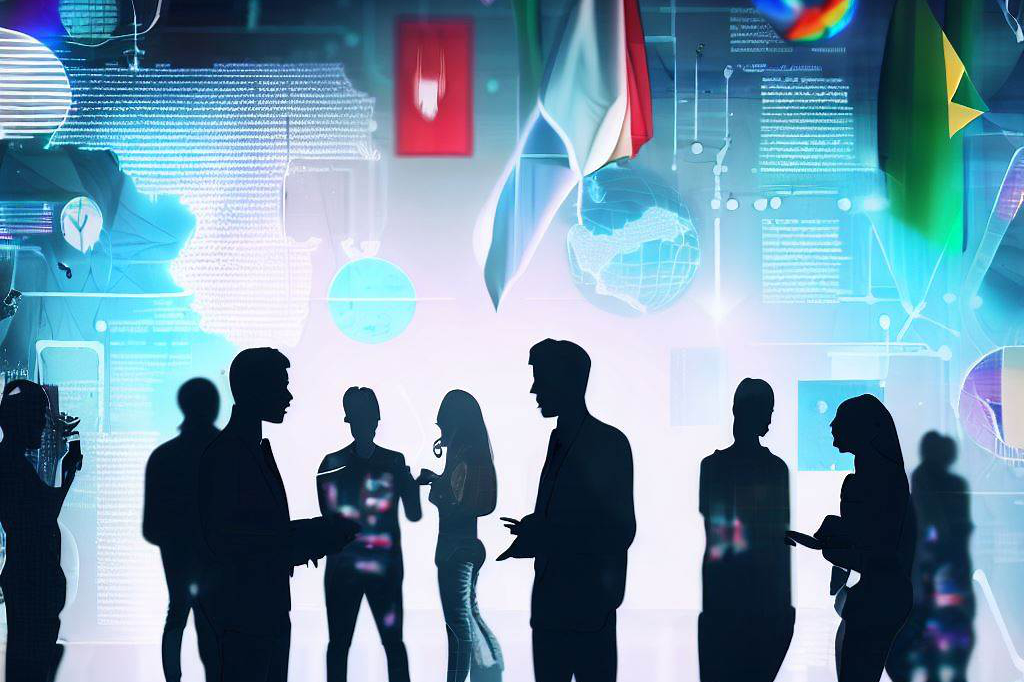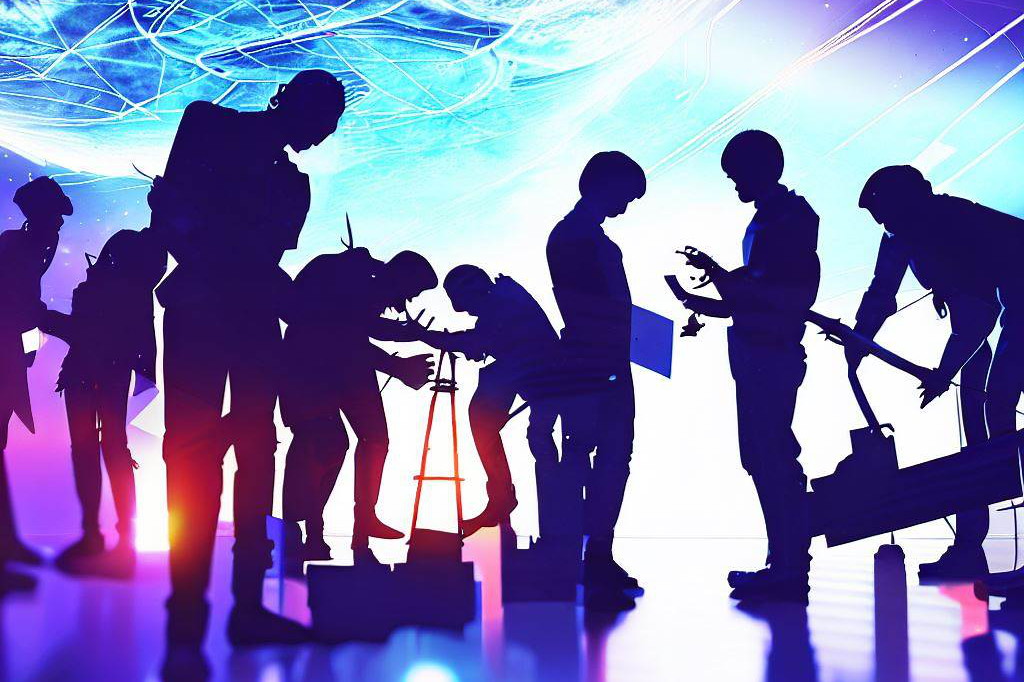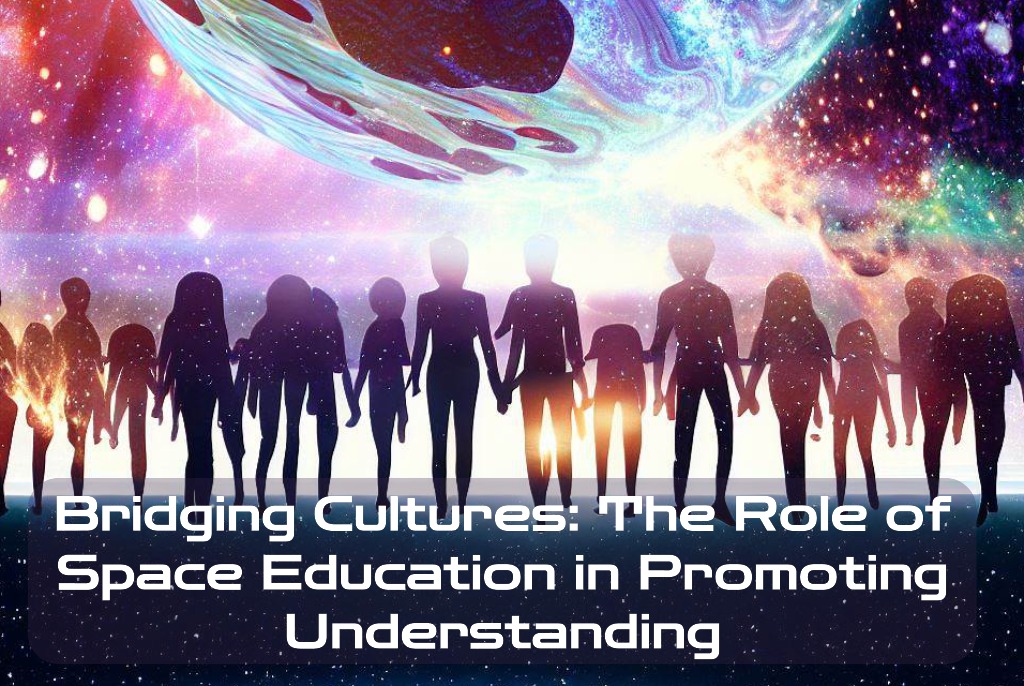The Power of Cultural Exchange and Understanding in the Modern World
In today’s globalized world, cultural exchange and understanding have become more important than ever. As nations become more interconnected through travel, trade, and technology, it’s crucial that we learn to appreciate and respect each other’s differences.
Cultural exchange allows us to do just that by promoting cross-cultural dialogue and understanding. The benefits of cultural exchange are vast.

It can help break down stereotypes, increase tolerance, and promote peace between nations. By learning about different cultures, we can gain a deeper appreciation for our own as well as develop a broader perspective on the world.
The Role of Space Education in Promoting Cultural Exchange
Space education offers a unique opportunity to promote cultural exchange and understanding. Space exploration has brought people from different cultures together to work towards a common goal: advancing human knowledge through science and exploration. Through space education programs, students can learn about the history of space exploration, the science behind it, and the ways in which it has brought people from different cultures together.

By studying space exploration in this context, students can gain a greater appreciation for the contributions that people from diverse backgrounds have made to this field. Moreover, space education offers an opportunity for students to develop critical thinking skills by examining complex issues related to space exploration, such as ethical considerations around colonization or environmental impact.
These discussions can provide a platform for open dialogue between people from different cultures with divergent viewpoints, leading to greater shared understanding. In short, space education offers unique potential for promoting cross-cultural dialogue and appreciation among young learners, thus playing an essential role in fostering global peace and cooperation.
The significance of space exploration in cultural exchange
Space exploration has always been an area of great interest and fascination for people around the world. However, beyond its scientific value, space exploration also has a significant impact on cultural exchange.
As humans venture out into the unknown depths of space, they are also bringing together different cultures and promoting understanding between them. One example of this is the International Space Station (ISS).

The ISS is a joint project between multiple countries, including the United States, Russia, Japan, Canada, and several European nations. Astronauts from these countries work together on board the ISS to conduct research and explore new frontiers in space.
This international collaboration has helped build bridges between different cultures and promote understanding among them. Another significant example is NASA’s Apollo-Soyuz Test Project in 1975.
During this mission, American astronauts collaborated with Soviet cosmonauts to conduct joint experiments in orbit. The mission was a historic moment in the Cold War era as it marked a rare moment of cooperation between two countries that were otherwise often at odds with each other.
How space exploration has brought people from different cultures together
Beyond just international collaborations in space missions, space exploration has also led to interactions between individuals from diverse backgrounds. For instance, many astronauts come from different parts of the world with unique cultural backgrounds and experiences. They bring these perspectives with them as they work together towards common goals.
In addition to astronauts themselves, scientists and engineers working on various aspects of space programs also come from diverse backgrounds. These teams often have members from multiple countries working together on complex projects that require close collaboration and communication.
These interactions have not only fostered new friendships but have also led to greater understanding between people from different cultures. Through sharing their experiences and perspectives with each other, individuals involved in space exploration have been able to learn more about each other’s customs, values, and ways of life.
Examples of international collaborations in space missions
As mentioned earlier, the International Space Station is perhaps one of the most significant examples of international collaboration in space missions. However, there have been numerous other projects that have brought together individuals from different cultures to work towards common goals. For example, the Mars Exploration Rovers mission involved a team of scientists and engineers from various countries working together to design and operate two robotic rovers on the Martian surface.
This mission required close coordination between team members across multiple time zones and cultural differences. Similarly, NASA’s Voyager mission involved a collaboration between multiple countries to launch two spacecraft that would explore our solar system’s outer planets.
This project required significant cooperation between teams from different countries to coordinate the various aspects of the mission, including data analysis and tracking of the spacecraft. Through these collaborations, individuals from different cultures have been able to work towards common goals and achieve remarkable feats that would not be possible without such cooperation.
Space education as a tool for promoting cultural exchange
How learning about space can encourage curiosity and open-mindedness towards other cultures
Space education is not just about learning facts and figures about the universe; it’s also about opening up new perspectives, sparking curiosity, and fostering a sense of wonder that can lead to a greater appreciation of diversity. When students learn about different countries’ contributions to space exploration, for example, they may begin to see those countries in a new light.
They may also develop an interest in learning more about the culture and history that led to those contributions. One way that space education can promote cross-cultural understanding is by highlighting the similarities between different cultures’ approaches to scientific inquiry.
For example, when discussing how NASA conducts experiments on the International Space Station (ISS), educators might compare these methods with those used by other countries’ space agencies. This can help students recognize that, despite cultural differences, there are many shared values and practices when it comes to advancing scientific knowledge.
The impact of space education programs on students’ attitudes towards diversity
Research has shown that exposure to diverse perspectives through education can have a positive impact on students’ attitudes towards diversity. Space education is no exception: by introducing students to different cultures’ contributions to space exploration, educators may be able to promote greater respect for diversity both inside and outside the classroom.
One study published in The Journal of Social Psychology found that high school students who participated in an immersive space camp program showed significant increases in their acceptance of diverse viewpoints compared with a control group who did not participate. The researchers suggested that this shift in attitude was due in part to participants being exposed to people from different backgrounds during their time at camp.
Overall, then, it appears that space education has great potential as a tool for promoting cultural exchange and understanding. By emphasizing the commonalities between different cultures rather than focusing solely on differences, educators can help students develop a broader perspective and a greater appreciation for diversity.
Case studies: Successful examples of using space education for cultural exchange
International Space Station as a platform for intercultural communication and cooperation
One of the most successful examples of space education promoting cultural exchange is the International Space Station (ISS). The ISS is a joint project between five different space agencies, including NASA and the Russian Space Agency. Astronauts from various countries live and work on the ISS, engaging in scientific research projects that benefit people all over the world.
In addition to scientific collaboration, astronauts also engage in intercultural communication while aboard the ISS. They share meals, watch movies, and celebrate holidays together, learning about each other’s cultures in the process.
For example, every year on Thanksgiving, American astronauts bring out traditional Thanksgiving foods for everyone to try. This kind of cross-cultural sharing helps promote understanding and appreciation among people from different backgrounds.
Programs like The Mars Generation and Space Camp that bring together diverse groups of students to learn about space

Another successful example of using space education for cultural exchange is programs like The Mars Generation and Space Camp. These programs bring together students from all over the world who share an interest in space exploration. Through learning about science and technology related to space travel, these students are able to build connections with each other despite differences in language or culture.
The Mars Generation offers immersive educational experiences that include simulations of life on Mars and training exercises used by real astronauts. Students from around the world come together at The Mars Generation camps to learn about each other’s cultures while pursuing their shared passion for space exploration.
Similarly, Space Camp allows students from around the world to train like astronauts by simulating missions into outer space or building rockets from scratch. By working together towards a common goal related to outer-space travel, these programs allow young people to break down barriers based on differences.
The Potential Impact of These Programs on Future Space Exploration
These programs have the potential to create a new generation of space enthusiasts who value cultural exchange and understanding. As more people become interested in space travel and exploration, increased collaboration between countries becomes necessary, which also opens up opportunities for greater cultural exchange. The knowledge gained through these programs can help young people develop the skills needed to work with people from diverse backgrounds, making them better equipped for future careers in fields that rely on collaboration between individuals with different cultural backgrounds.
Furthermore, by participating in these programs, students are exposed to the international nature of space exploration and the importance of working together across borders towards scientific goals. This exposure may encourage young people to study fields related to science or technology where they can contribute to space exploration efforts in the future.
Using space education as a tool for promoting cultural exchange has proven successful through case-studies such as those mentioned above. Programs like The Mars Generation and Space Camp bring together students from diverse backgrounds who share an interest in outer-space travel.
Additionally, projects like the International Space Station offer opportunities for astronauts from different countries to engage in intercultural communication while working towards shared scientific goals. These programs have the potential to inspire a new generation of young people who value diversity and collaboration and want to contribute positively to global progress.
Challenges and Solutions for Using Space Education to Promote Cultural Exchange

Overcoming Language Barriers in Space Exploration
One of the most significant challenges in promoting cultural exchange through space education is overcoming language barriers. In the context of space exploration, it’s essential to ensure that everyone involved can communicate effectively. However, this can be difficult when people come from different countries and speak different languages.
The solution to this challenge involves finding ways to simplify communication between different cultures. Scientists and engineers have developed various systems, such as universal metric units, pictorial representations of information, and common technical terms, to address these challenges.
Making Space Education More Inclusive
Another challenge in using space education to promote cultural exchange is developing more inclusive programs that reach a wider range of students. Unfortunately, access to quality space education programs is often limited by factors like cost or location, which disproportionately affect students from disadvantaged backgrounds.
To address this issue, we need more comprehensive outreach programs that target underserved communities with opportunities for hands-on learning experiences. For example, we could launch more satellite programs in schools and community centers or develop virtual reality experiences that simulate what it’s like to live on a space station.
The Role of Cultural Sensitivity in Space Education
Another critical challenge facing those who want to use space education as a tool for promoting cultural understanding is ensuring everyone involved approaches intercultural communication with sensitivity and openness. It’s essential not only to respect other people’s cultures but also to find ways to actively learn from them. This requires intentional efforts towards identifying cultural differences through cross-cultural training initiatives so that all parties can work together harmoniously towards accomplishing their objectives.
Although there are several challenges associated with using space education as a means of promoting intercultural exchange and understanding – such as linguistic barriers – they are not insurmountable. By developing more inclusive and culturally sensitive programs that target underserved communities with opportunities for hands-on learning experiences, we can begin to break down barriers and promote a more open, harmonious society.
The future of using space education for cultural exchange
The final frontier for global peace and understanding
As we have seen, space education holds immense potential for promoting cultural exchange and understanding in a world that sorely needs it. By bringing people from different backgrounds together to explore the mysteries of the universe, space exploration has already fostered collaboration and cooperation on an unprecedented scale.
Looking ahead, there is much reason to be hopeful about the future of using space education to promote global peace and understanding. As more countries invest in space exploration and more young people are inspired to learn about it through programs like Space Camp, we can look forward to a new generation of scientists, engineers, and leaders who are equipped with the skills and knowledge needed to work across cultures and promote cross-cultural understanding.
Time for continued investment
Of course, there are challenges that must be addressed if we are to make the most of these opportunities. Addressing language barriers, improving accessibility for disadvantaged groups, and ensuring that all students have access to quality education in this area will be key priorities going forward.
But if we can rise to these challenges – as we have done time and again throughout history – then we can look forward to a bright future indeed. By investing in space education as a means of promoting cross-cultural exchange and understanding, we can lay a foundation for greater global peace, cooperation, and prosperity in the years ahead.
A positive outlook on our future
Let us remember that while our world may seem divided at times by politics, geography, culture, religion, or any other number of factors – when it comes down to it, we all share one planet. And as explorers venture ever further into the vast depths beyond our little blue dot in space – seeking answers about our place in the cosmos – so too do they bring us closer together as members of humanity.
So let us embrace the opportunities that space education presents – to learn, to explore, and to connect with one another in new and exciting ways. For, in doing so, we can build a brighter and more hopeful future for ourselves and for generations yet to come.
TL;DR – FAQs
– 💡 Cultural exchange and understanding are crucial in today’s globalized world to appreciate and respect each other’s differences.
– 💡 Space education promotes cultural exchange by bringing people from different cultures together to work towards advancing human knowledge through science and exploration.- 💡 Space exploration builds bridges between cultures, as seen in projects like the International Space Station (ISS) and the Apollo-Soyuz Test Project.
– 💡 Interactions in space exploration foster understanding between individuals from diverse backgrounds, including astronauts, scientists, and engineers.
– 💡 Space education programs encourage curiosity, open-mindedness, and respect for diversity among students.
– 💡 Exposure to diverse perspectives in space education positively impacts students’ attitudes towards diversity.
– 💡 Successful examples of using space education for cultural exchange include the ISS, The Mars Generation, and Space Camp programs.
– 💡 Space education programs have the potential to create a new generation of space enthusiasts who value cultural exchange and collaboration.
– 💡 Challenges for using space education in promoting cultural exchange include language barriers, inclusivity, and cultural sensitivity.
– 💡 Overcoming challenges requires simplified communication methods, more inclusive programs, and cross-cultural training initiatives.
– 💡 The future of using space education for cultural exchange holds great promise in promoting global peace, understanding, and cooperation. Continued investment and addressing challenges are key to realizing this potential.

C M, a seasoned editor, journalist, and consultant, is deeply fascinated by the convergence of technology, space, and the future of humanity.
With a particular interest in transhumanity, futurology, and the philosophical and ethical dimensions of these domains, C M serves as the lead contributor to SpaceSpotlight and TranscendSphere.
When not penning insightful articles on these rapidly evolving fields, C M indulges in their love for podcasts and books, proudly embracing their status as a ‘Happy Nerd Extraordinaire!’



